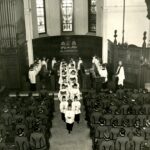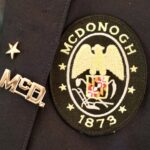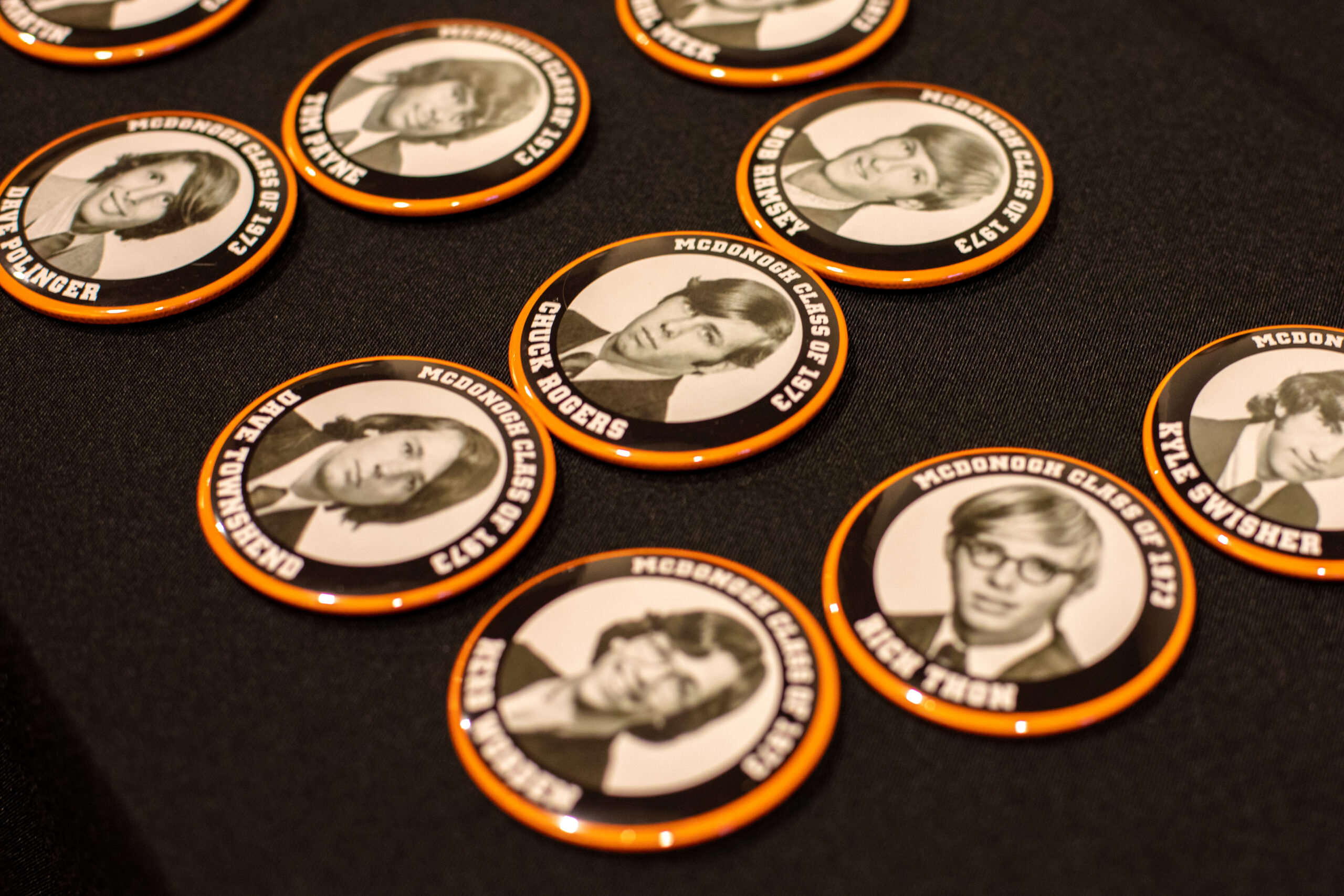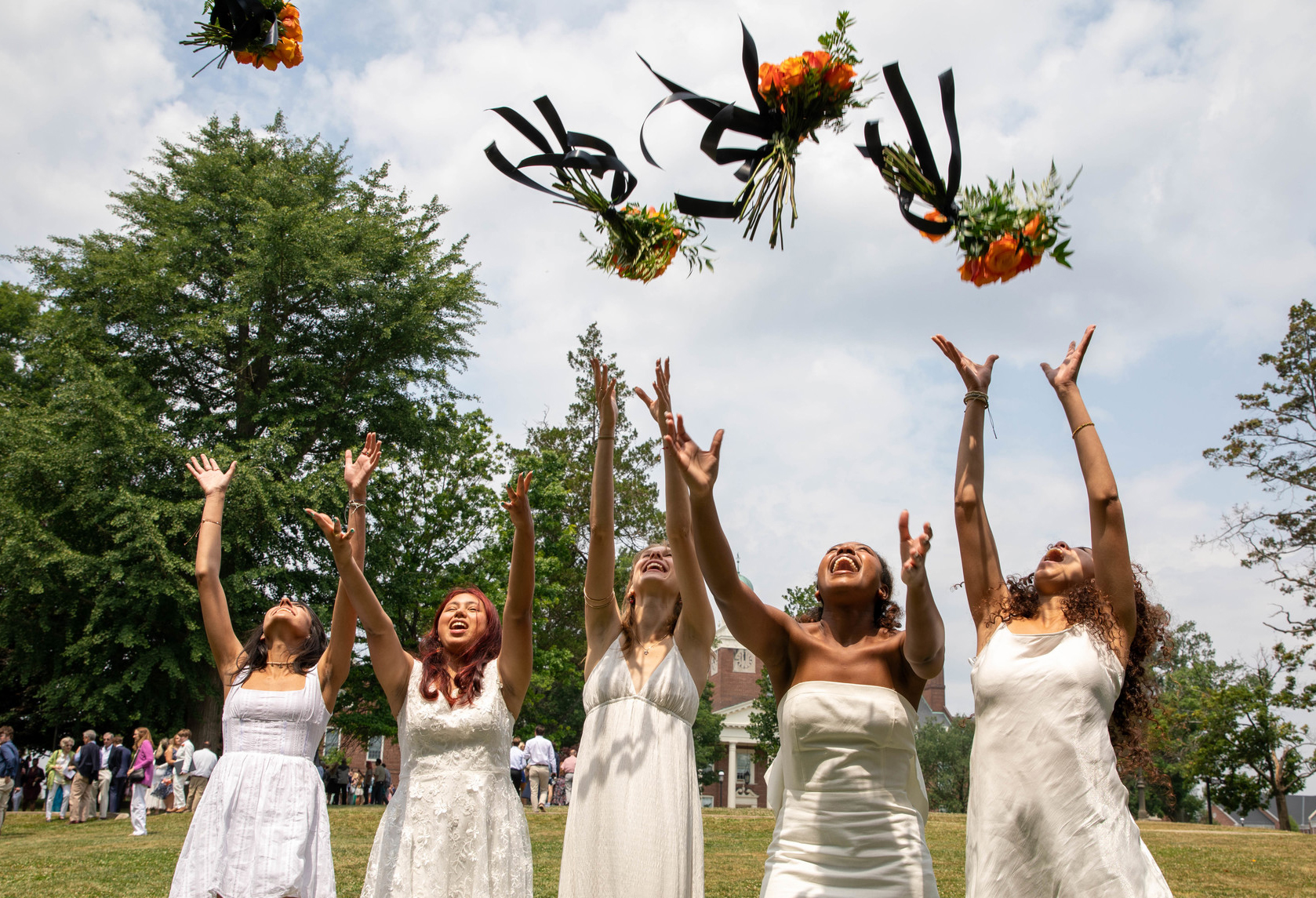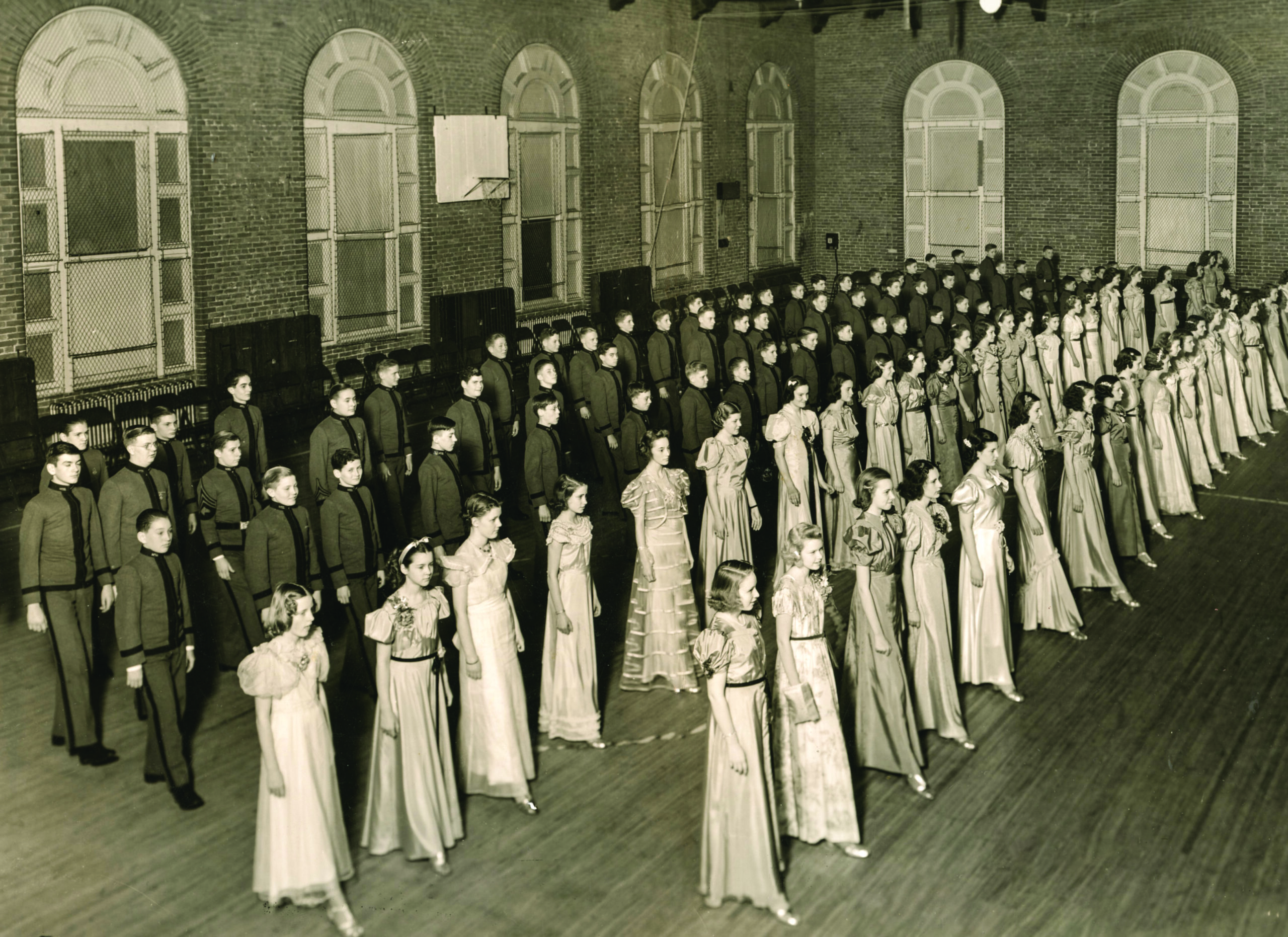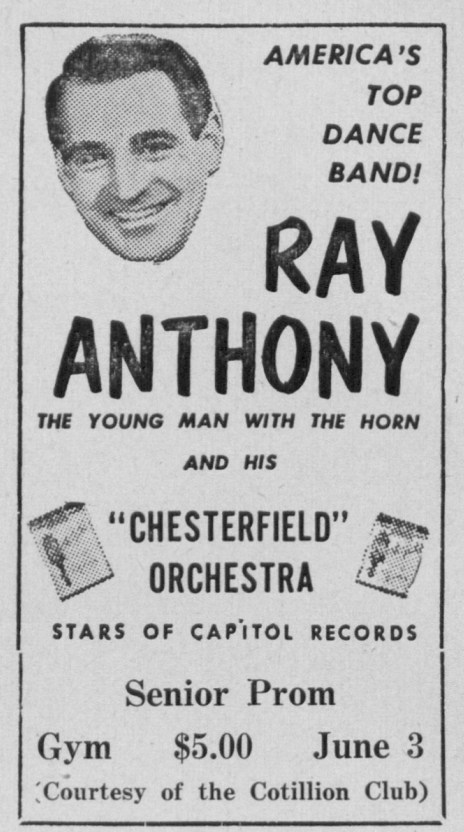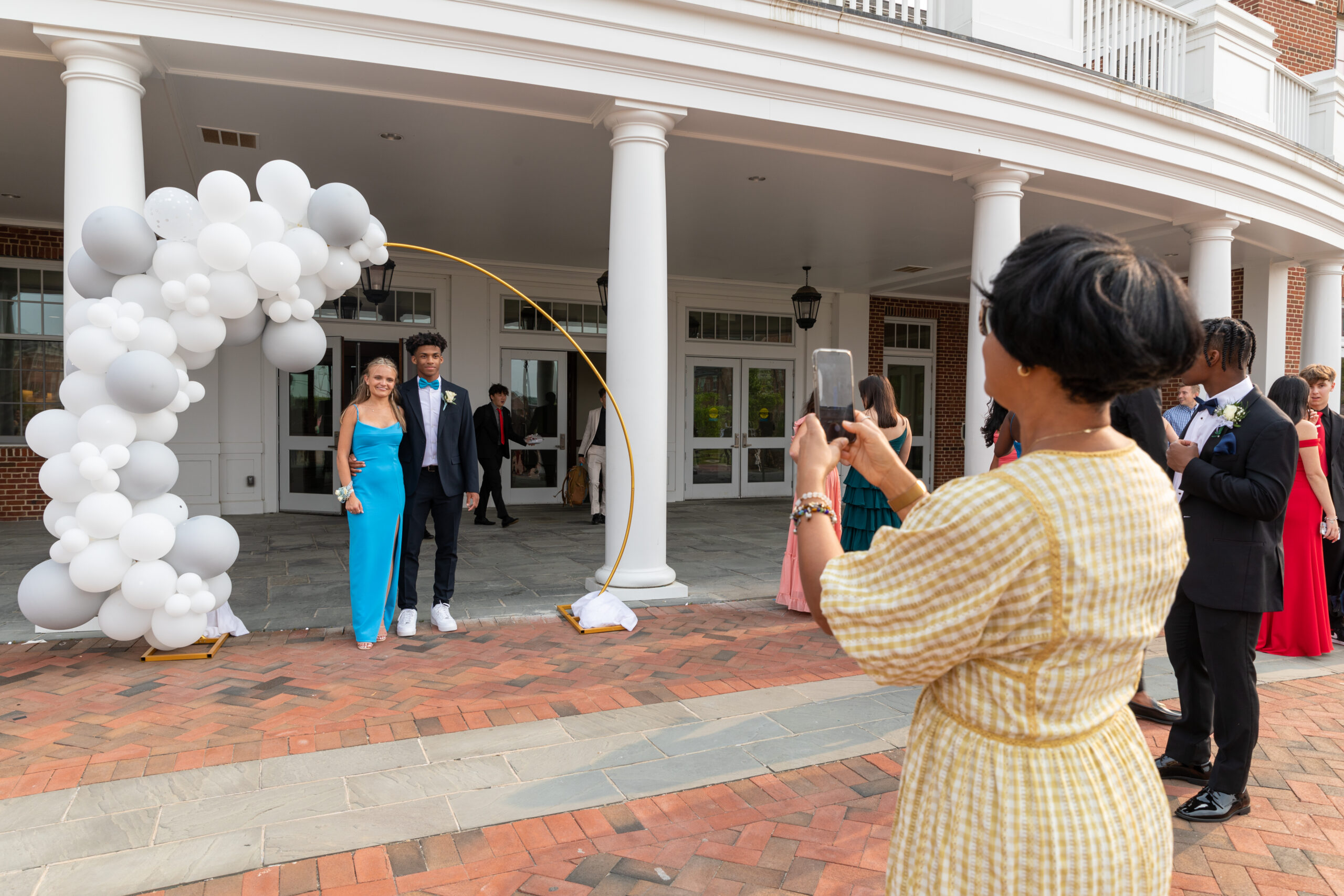In 1912, some of the 150 boys enrolled at the time expressed a desire to learn how to dance. The August 10 issue of The Week reported, “Mr. Clayton asked the athletic club boys if they wished to learn dancing. The boys got very enthusiastic about it. Mr. Clayton consented to teach the boys how to dance. He began by teaching the two-step and waltz.”
Eventually, an end-of-year senior dance became the tradition. Details of the Class of 1923’s evening celebration were described in the June 9, 1923, issue of The Week. “Due to the efforts of the Seniors, the gymnasium was beautifully decorated for the occasion. Suspended from the center of the ceiling and passing to the different corners were streamers of various colored bunting. Flags and pennants covered the walls, while the Japanese lanterns shed a delightful glow over the entire scene.”
The article continued, “The couples began to arrive about five o’clock and occupied themselves until supper by walking around and viewing the school. About half-past six we assembled on the front circle and were served a delicious supper which Miss Shrive had prepared for us. The dancing began promptly at eight o’clock and too much praise cannot be given Mills’ Melody Men for the music they furnished. There were 12 dances, two waltzes and 10 foxtrots. During the intermission, refreshments were served to those who had not strolled outside to look at the moonlight.”
In 1927, the Cotillion Club was formed “for the purpose of giving dances for the school.” An article in the January 15, 1927, edition of The Week described: “Due to the fact that a few of the boys are unable to dance, an instruction dance will be held in the lounge, on Saturday afternoon, January 15. Mr. Barger and Mr. Duncan have consented to supply ‘drags’ and we hope the boys will show their appreciation by a generous turn-out. The first dance of the series under the auspices of the Cotillion Club, will be on Lincoln’s Birthday, Feb. 12. A good orchestra will furnish music. The gymnasium will be decorated by a Club Committee and we can promise a most enjoyable evening for all who attend. Come on boys, let’s all turn out and make this a big success!”
Formal dances were held in the large dining hall or gymnasium to the music of an imported orchestra and more frequent record hops were held in the Allan Building lounge. Music and dance moves changed with the times. On October 10, 1965, The Week reported on the Cotillion Club’s annual informal football dance “featuring the emphatic entertainment of the El Corols. Presented in true James Brown fashion, soulful and screaming Little Wimby, lead singer of the group, shared honors with the El Corolettes in frenzied discotheque pulsations. Edwards Gymnasium resounded with the musical vibrations of Night Train, Dancing in the Street, Please, Please, Oh Baby Don’t You Weep, Rescue Me, Watermelon Man, Out of Sight, Satisfaction, and a rich assortment of other popular songs. Urging everyone to ‘get in the groove,’ the El Corolettes and company staged a gyrating exhibition of recent teen dances.”
Dances continue to be a social highlight each school year, culminating in the Senior-Junior Prom. In May 1998, The Week offered Prom Dos and Dont’s including the following advice for guys: Do compliment your date on how beautiful she looks. Don’t act surprised that she looks like a princess. Do buy your date flowers. Don’t pick them from her mom’s garden. Do wear a nice-smelling cologne. Don’t bathe in it. And this advice for girls: Do get your hair done. Don’t go for the Marge Simpson look. Do get your nails done. Don’t get fake tips that look like claws. Do wear heels to be as tall as your date. Don’t go for the Spice Girl platform look.
In recent years, promposals (elaborate ways to invite someone to be your prom date) and After Prom (a safe, parent-sponsored post-Prom event filled with games, food, and prizes) have become part of the annual fun. Students and their dates continue to look stunning and are always up-to-date on the latest dance moves.

